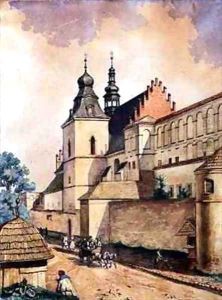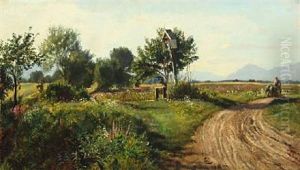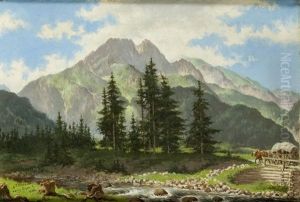Walery Eljasz-Radzikowski Paintings
Walery Eljasz-Radzikowski was a Polish painter, illustrator, and pedagogue, born on January 13, 1841, in Krakow, then part of the Austrian partition of Poland. He was a prominent figure in the Polish art scene of the 19th century and is best known for his works focusing on Polish historical scenes, landscapes, and portraits. Eljasz-Radzikowski's art was deeply influenced by the Polish Romantic movement, which was characterized by its emphasis on national identity and the struggle for independence from foreign powers.
Educated at the School of Fine Arts in Krakow, he was a student of the renowned Polish historical painter Jan Matejko. Under Matejko's guidance, Eljasz-Radzikowski honed his skills in historical painting, a genre that sought to inspire and educate the public about Poland's glorious past. He became an important contributor to the development of Polish historical painting, alongside other notable artists of the time.
After completing his studies, Eljasz-Radzikowski traveled extensively throughout Europe, which allowed him to encounter various artistic styles and techniques. These experiences enriched his own practice and contributed to the diversity of his artistic output. Upon his return to Krakow, he became an active member of the city's artistic community, engaging in the cultural life of the city and contributing to the preservation and promotion of Polish cultural heritage.
Eljasz-Radzikowski's works often featured scenes from Polish history, landscapes, and genre paintings that captured the spirit of Polish rural life. He was also an accomplished portraitist, capturing the likenesses of many notable figures of his time. His commitment to education led him to take on a role as a teacher, where he influenced a generation of young Polish artists.
Walery Eljasz-Radzikowski passed away on October 13, 1905, in Krakow. His legacy is preserved in the collections of various Polish museums and galleries, and he is remembered as an artist who contributed significantly to the shaping of Polish national consciousness through art. His works continue to be celebrated for their artistic merit and historical significance.


